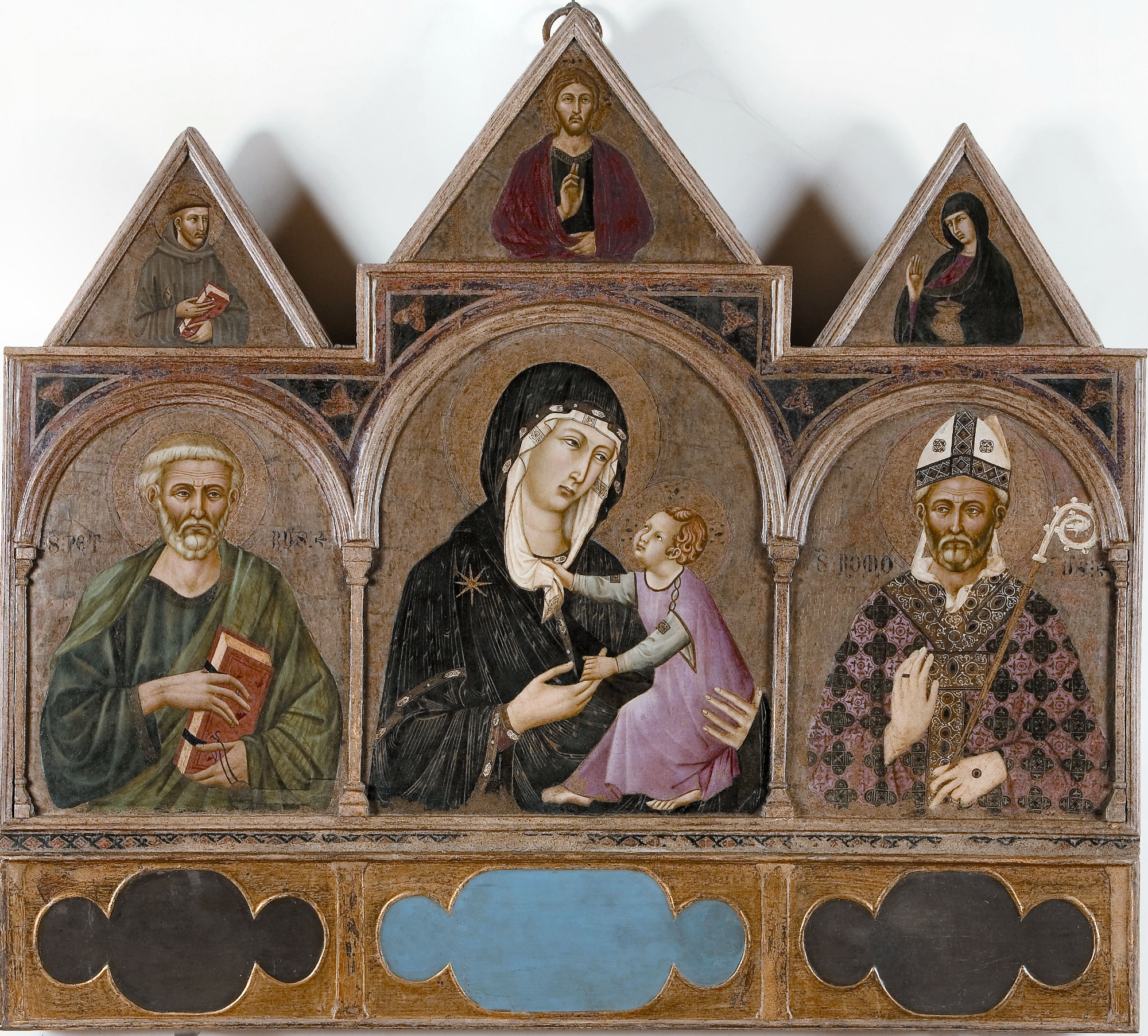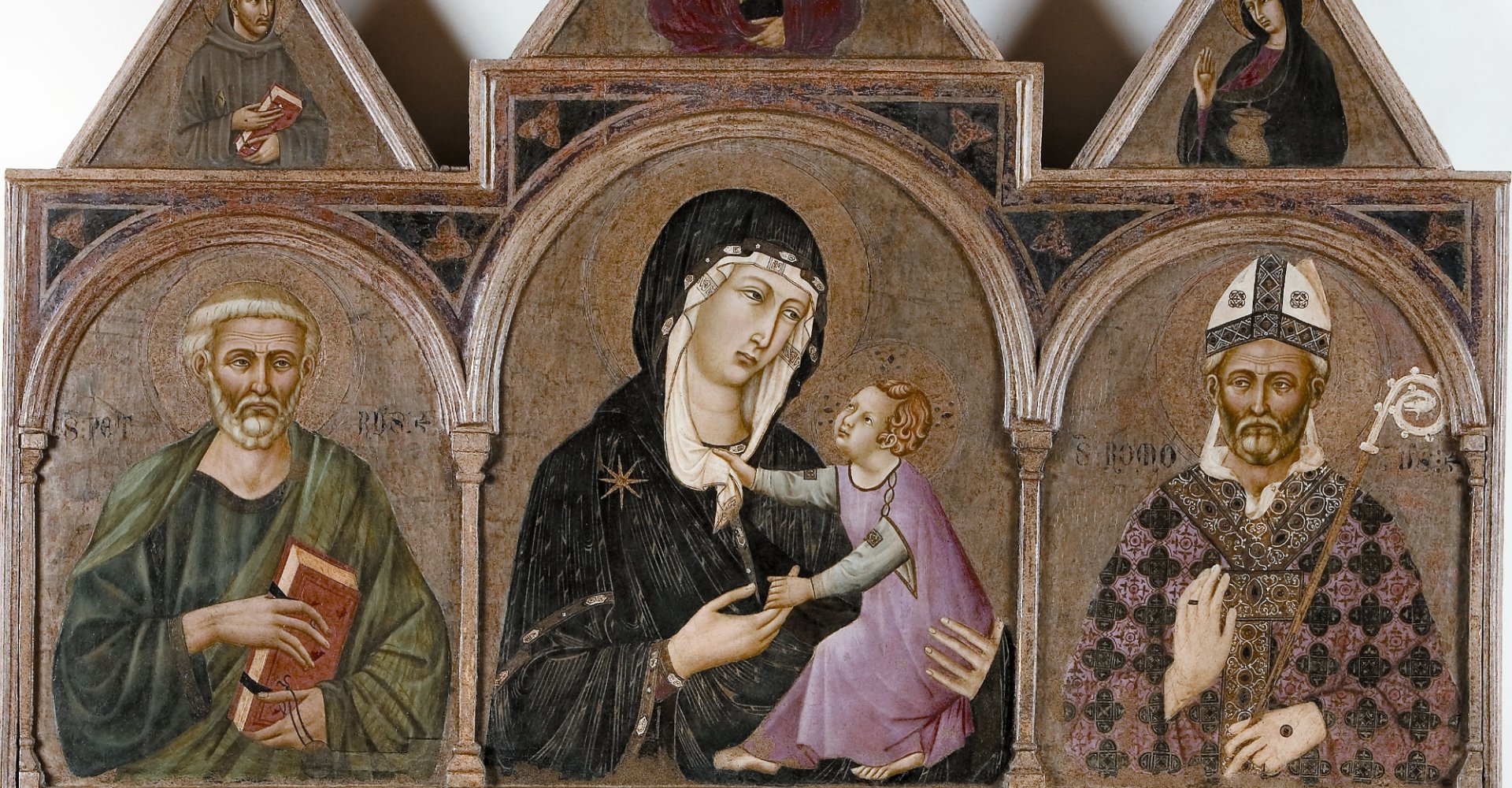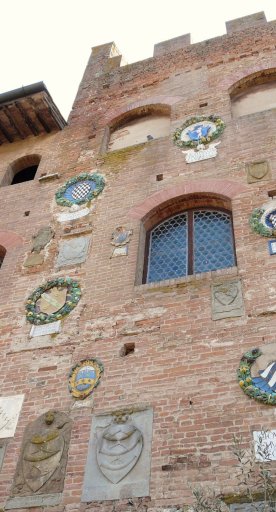The Museum of Sacred Art in Certaldo
A precious collection of works from churches in the area
The Museum of Sacred Art in Certaldo, which opened on June 30, 2001, is housed in the painstakingly restored 15ᵗʰ-century Augustinian Convent, in the heart of the medieval village of Certaldo Alto, between the Palazzo Pretorio and the Boccaccio’s House, with which it forms a single museum hub. The entrance opens onto the charming cloister adjacent to the Church of Santi Jacopo e Saint Filippo, which holds the tomb of Blessed Giulia della Rena, Patron Saint of the city, and the cenotaph of the poet Boccaccio.
The museum is part of the circuit of Diocesan Museums in the Florence area, devised to collate and enhance works of art from churches in the area that are difficult to preserve in their original locations. The 7 exhibition rooms house a fine collection of paintings, sculptures, goldsmithing and sacred vestments, dating from the 12ᵗʰ to 18ᵗʰ century, with a focus on local artistic production and its stylistic and devotional evolution.
The 1ˢᵗ room, formerly the convent refectory, houses the picture gallery displaying masterpieces of panel paintings from the 13ᵗʰ–16ᵗʰ centuries. Highlights include the Madonna and Child by Ugolino di Nerio, the Madonna Enthroned and Two Angels by Meliore di Jacopo, works by the Maestro del Bigallo and detached frescoes by Cenni di Francesco di Ser Cenni.

The real jewel of the museum is the famous wooden Crucifix depicting Christus Triumphans, dating from the 13ᵗʰ century and attributed to an unknown Tuscan sculptor yet a work of great expressive power and uniqueness in the panorama of medieval Italian sculpture.
This is followed by 3 rooms devoted to sacred goldsmithing, with pieces largely from the Parish Church of San Lazzaro in Lucardo, counting astylar crosses, chalices, thuribles, reliquaries and precious chiseled bronze pax boards. Of note is the exquisite reliquary bust of Blessed Giulia, made between 1652 and 1653 by goldsmith Paolo Laurentini.
The liturgical vestments room displays fine ecclesiastical textiles from the 16ᵗʰ to 18ᵗʰ centuries, while the former chapel of the Company of Santissima Annunziata houses a gallery of 17ᵗʰ-century paintings on canvas, including works by Monaldi, Pippo Sciamerone, Grassi and the Florentine and Tuscan schools.
Completing the artistic immersion are 2 wooden sculptures in the round, from the Sienese school, together with the Linari Collection established in 2018 to feature paintings, engravings, sculptures and liturgical objects from the 16ᵗʰ to 18ᵗʰ centuries, including a work signed by Ciro Ferri, conceded by the Villa Bardi in Linari.
The museum is also home to the EduKids Project, with educational offerings designed to bring younger children closer to the history and art of the area, also extending to the basement levels of the convent, where a rich and original educational offering comes to life. Among the proposals, the “Erba della Paura” (“Herb of Fear”) workshop allows people to discover an ancient remedy of folk medicine from the Certaldo area. The experience is exalted by a visit to the monastic spaces, with insights into herbal practices, period objects, the preparation of medicines and medieval burial rituals.



